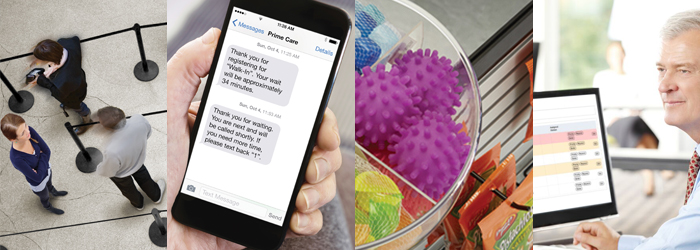
Consejos para usar la señalización para optimizar el direccionamiento de recorridos y el flujo de clientes
It’s a common scenario in stadiums, arenas, airports, museums, malls, and even large retail stores: People stand in the unfamiliar venue looking around fruitlessly, trying to find their way to the entrance, exit, bathroom, section, aisle, assigned seat... The fact is, people generally know where they want to end up – they just don’t always know how to get there. It’s your job to make it easier.
A successful wayfinding system will help people determine their location, determine their destination, figure out how best to get there, know when they’ve arrived, and, importantly, find their way back. All of this leads to smooth customer flow, which means a safer, more enjoyable experience for all.
Signage is critical to wayfinding.
Signage is one of several major components of an effective wayfinding system that makes finding one’s way more logical, aesthetically-pleasing, and reliable. Here are several tips to make the most of signage in your complex venue:
1. Be Clear
Avoid trying to express your company’s persona at the expense of your wayfinding system. There are ways to demonstrate your uniqueness without getting obtuse with signage. There may be the visitors who appreciate unusual signage at every turn in your art gallery, but you are more likely to please and calm the masses by offering up clearly designed signage.
Consider an overall color-coded design through stanchions, belts, and signs that reinforces your wayfinding strategy; you can even opt for belts printed with your company’s logo or text if you want that jolt of individuality.
2. Be Consistent
On the heels of clarity comes consistency. Though you may be tempted to opt for a fresh new design each time you’re in need of signage for your venue, consistency is the best way to make your customers comfortable. Maintain a recognizable and uniform design throughout your wayfinding system with the same font, colors, and icons.
A visitor shouldn’t be required to decipher a new code from one spot to another – having a cohesive series of signage will allow a person to focus on the information you’re providing them with, rather than being distracted by unfamiliar images or unexpected colors.
3. Be Bold
That tiny sign in your giant venue is not going to be effective. Consider your entire audience when developing your wayfinding system, from young people to elderly, people with disabilities to people who cannot read. They need to be able to locate an entrance at a distance and a large banner sign attached to a tall post can clearly mark an entrance and make it easy to identify service areas. Post-top or post-front signage will also complement your wayfinding strategy, offering reassurance to your visitors or customers along their path.
4. Be “Multi-Lingual”
You don’t necessarily have to print each of your signs in English, Spanish, and French. One language and an identifiable symbol or pictogram can be enough to get people where they want to go. Whatever text you use, choose a legible and easily readable typeface that is printed with contrast and simple wording. Complete sentences and punctuation can be abandoned, unless they enhance the message you’re aiming to convey. “The line to checkout begins here” works but a simple “Enter Here” is more effective.
Need help sorting out a clear wayfinding system for your complex venue? The Lavi public guidance experts have signage and wayfinding solutions and recommendations to keep your customers oriented and content. Request a consultation today.
SUSCRIBIRSE
Suscríbase para mantenerse al día con los nuevos productos, información y noticias sobre los recursos.
ENTRADAS DE BLOG RECIENTES
Theft at the Register: How Strategic Queue Design Protects Profits
Leer el artículo completoRapid Deployment Crowd Control: JetTrac Portable Barriers For The Biggest Spaces
Leer el artículo completo4 Psychological Reasons Your Customers Hate Waiting In Line
Leer el artículo completoFrom Bleachers To Bookstores: 4 Campus Crowd Control Solutions
Leer el artículo completo








